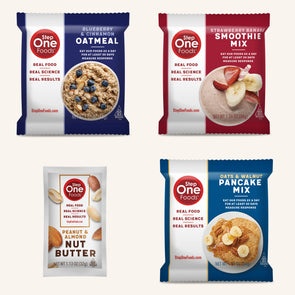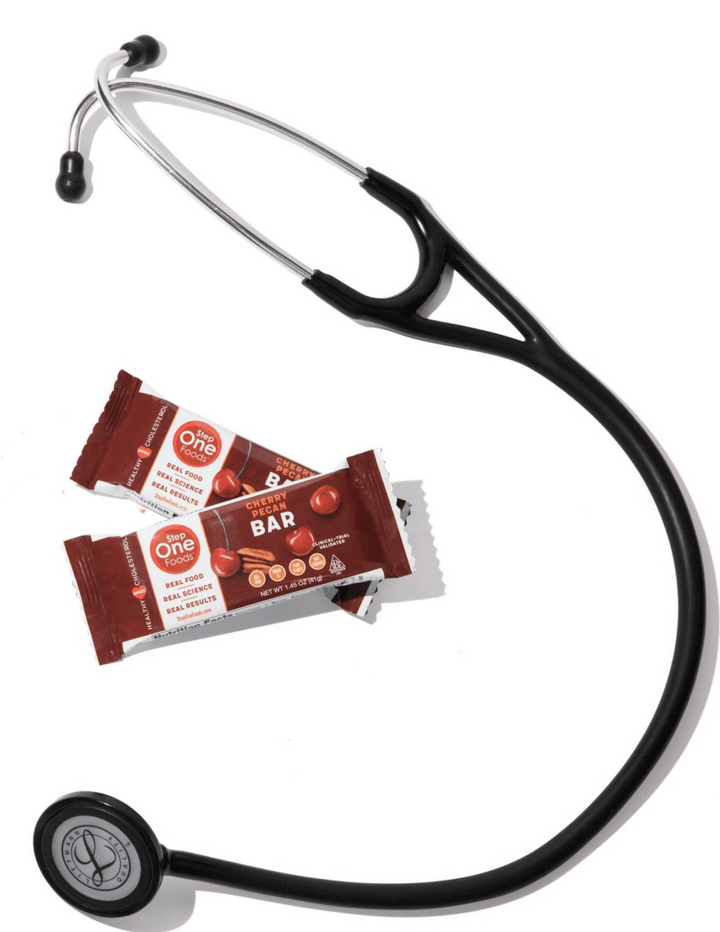

Get Help With Your High Blood Pressure and High Cholesterol Levels
High blood pressure, or hypertension, is a primary risk factor for heart disease. The same can be said for high cholesterol. But what are these two conditions, and how are they related? In today’s article, we’ll take a closer look at the relationship between high blood pressure and high cholesterol, answer some frequently asked questions about the two and tell you how Step One Foods can help. Read on to learn more!
How Are They Related?
High blood pressure and high cholesterol are different conditions, but they are closely linked. Both conditions affect the arteries, potentiating each other. And both are caused or exacerbated by similar lifestyle factors.
When cholesterol levels are high, particularly LDL cholesterol, plaque can deposit and build up on the inner walls of the arteries. This can cause the arteries to become more rigid and narrow, which forces the heart to work harder to pump blood throughout your body. This can then raise blood pressure levels. But the relationship between the two can go the other way as well. High blood pressure can cause arterial damage, and cholesterol can more easily build up in these more vulnerable artery walls.
In short, both high blood pressure and high cholesterol fuel each other. As mentioned, both of these conditions increase the risk of heart disease and stroke. This is why it’s important to manage and treat these conditions, especially if you have both.
What Is High Blood Pressure or Hypertension?
High blood pressure, also known as hypertension, occurs when the force of the blood against the walls of the arteries is consistently too high. Left untreated, it can increase your risk of developing heart disease. Medications are prescribed when blood pressure levels are consistently at or above 140/90. Patients with blood pressures consistently between 130/80 and 139/89 may be given a chance to lower their readings with lifestyle changes alone, but the threshold to start medications is low, especially if other risk factors (such as high cholesterol) are present. Blood pressures consistently below 130/80 would typically not lead to the start of blood pressure lowering medications, although normal BP levels are considered below 120 for the top number and below 80 for the bottom number. BP levels would be considered severely elevated and requiring of prompt medical attention if they are over 180/120.
Common Signs & Symptoms
High blood pressure is often asymptomatic, underscoring the importance of getting your blood pressure levels checked regularly with your primary care provider. If there are symptoms of hypertension, they may include:
- Shortness of breath
- Nosebleeds
- Headaches
These symptoms typically occur at later, dangerous stages of high blood pressure. Even at these later stages, hypertension can often go unnoticed unless checked with a blood pressure cuff.
What Are the Causes?
Blood pressure can be caused by underlying health conditions, but for many adults, there isn’t always an identifiable cause. This is typically referred to as “essential” or “primary” hypertension.
Primary hypertension occurs when there is no reversible underlying condition contributing to high blood pressure. Gradual buildup of plaque is not all that reversible so hardening of the arteries can definitely be a major contributor to the development of “primary” hypertension. Of course, plaque build up can be exacerbated by certain conditions, like high cholesterol.
Secondary hypertension is caused by an underlying condition that can be ameliorated. Typically when hypertension is “secondary” it has a more sudden onset. It can be brought on by conditions like thyroid issues, sleep apnea, kidney disease, substance abuse, rare tumors and more.
Risk Factors & Complications
The root cause of high blood pressure can vary, but certain risk factors may increase your likelihood of developing the condition. These risk factors include:
- Having a family history of hypertension
- Being of South Asian, Black African or Caribbean descent
- Being over the age of 65
- Being overweight
- Leading a sedentary lifestyle
- Not getting restful sleep or experiencing sleep apnea
- Over consuming sodium
- Exposing yourself to stimulants (caffeine, alcohol, tobacco, etc.)
- Experiencing high levels of stress
- Having a health condition that increases the risk of hypertension
Testing & Diagnosis
Testing for high blood pressure involves using a blood pressure monitor to measure the pressure in your arteries when the heart beats (systolic pressure) and between beats (diastolic pressure). One reading often isn’t enough to diagnose high blood pressure, as certain factors can elevate your blood pressure levels. A series of measurements over time is needed for a diagnosis. Your provider may also recommend additional tests to search for underlying conditions and check for heart disease.
What is High Cholesterol?
High cholesterol is said to be present when too much cholesterol is circulating in the blood. Cholesterol is a waxy substance that helps our body perform essential functions, but too much circulating cholesterol can be a problem. Like high blood pressure, cholesterol can increase the risk of heart disease and stroke.
Common Signs & Symptoms
High cholesterol is typically asymptomatic. This underscores the importance of regular checkups with your primary care provider, as cholesterol testing is often the only way to catch high cholesterol early.
What Are the Causes?
There are various lifestyle choices that can lead to high cholesterol. These include:
Tobacco use - Tobacco use can increase LDL (bad) cholesterol and lower HDL (good) cholesterol.
Diet - Certain foods can raise cholesterol levels, especially foods with saturated fats and added sugars. Avoiding or limiting red meats, baked goods and fried foods is recommended.
Excessive alcohol consumption - It’s recommended to limit your alcohol intake to lower cholesterol levels.
Sedentary lifestyle - Not getting enough exercise can contribute to high cholesterol.
Good Cholesterol (HDL) vs. Bad Cholesterol (LDL)
When we talk about cholesterol, there are two main types to know. The first is high-density lipoprotein (HDL) cholesterol, which is considered the “good” cholesterol. HDL helps remove cholesterol from your body. The other is low-density lipoprotein (LDL) cholesterol, which is considered the “bad” cholesterol. LDL can contribute to plaque buildup in your arteries, increasing your risk of heart disease and stroke.
Risk Factors & Complications
Certain risk factors can increase your likelihood of having high cholesterol. Along with the lifestyle choices we discussed, there are risk factors that you may have less control over that can contribute. These include certain health conditions, taking certain medications, genetic factors, being over the age of 40 and being overweight.
Testing & Diagnosis
- Blood tests are used to measure cholesterol levels. These tests determine total cholesterol, HDL, LDL and triglycerides. If your LDL cholesterol levels are elevated or high, your provider will likely begin a treatment plan to lower your cholesterol levels.
When To See a Doctor
Since both high cholesterol and high blood pressure are typically asymptomatic, it’s important to schedule regular medical checkups. This is especially true for individuals over the age of 40 or anyone with risk factors associated with these conditions.
With early detection, these conditions can be more easily managed and treated. Although they often have no symptoms, you should see your doctor if you begin having any unusual symptoms that could be related to cardiovascular events or conditions, such as persistent headaches, chest pain, shortness of breath and more. Some symptoms may indicate a severe cardiovascular event and you should seek emergency medical attention.
For the most part, you can keep checks on your cholesterol and blood pressure levels with regular appointments and follow-ups with your primary care provider.
Treatment & Common Medications
High blood pressure and high cholesterol often have similar treatment methods, especially if an individual has both. Treatment often involves lifestyle modifications and medication, if necessary.
Medications for hypertension aim to lower blood pressure and may include ACE inhibitors, beta-blockers, calcium channel blockers and diuretics. For high cholesterol, statins are the medication most commonly prescribed and nearly everyone who is prescribed a medication to control their cholesterol levels will start with a statin drug.. Some other medications that may be prescribed for high cholesterol are ezetimibe, bempedoic acid, bile-acid-binding resins and PCSK9 inhibitors.
Lifestyle changes for both conditions often include dietary changes, exercise, limiting alcohol and quitting smoking. Treatment may also involve losing weight if you’re overweight or obese.
Treatment will vary by individual, and your provider can make adjustments as necessary.
Healthy Diet & Lifestyle Tips To Follow
Lifestyle plays an essential role in controlling blood pressure and cholesterol levels. Incorporating a balanced diet that includes fruits, vegetables, whole grains and lean protein sources can help.
This also means reducing your intake of foods that can elevate cholesterol and blood pressure levels, like foods high in saturated fats, sodium and added sugars. A good way to keep your diet balanced is by opting for fresh, whole foods over canned or processed items.
Regular physical activity is also important. Aerobic exercises like walking, cycling, swimming and more can help lower both cholesterol and blood pressure readings.
It’s also important to maintain a healthy weight, as excess weight can increase your risk for hypertension and cholesterol-related issues.
Finally, remember to avoid smoking and limit alcohol consumption, as these can both have negative effects on your cholesterol and blood pressure levels.
Customer Favorites
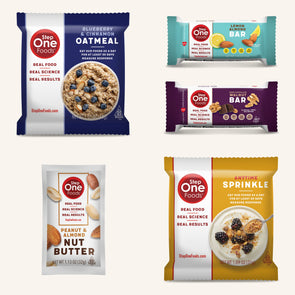
30-Day Starter Pack
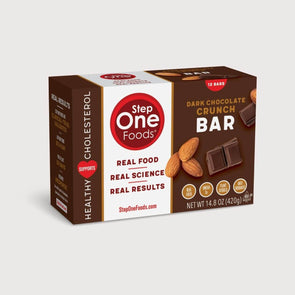
Dark Chocolate Crunch Bar
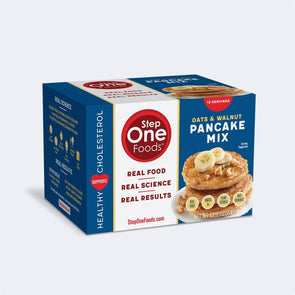
Oats & Walnut Pancake Mix
Frequently Asked Questions
High cholesterol may not directly cause high blood pressure, but it can increase your risk for high blood pressure. High cholesterol contributes to plaque accumulation which can narrow the arteries, forcing your heart to work harder and raising blood pressure.
To reduce high blood pressure, focus on a heart-healthy diet low in sodium, regular physical activity, maintaining a healthy weight, limiting alcohol consumption and avoiding tobacco use. Your primary care provider may also prescribe blood pressure lowering medications.
Lowering high cholesterol involves lifestyle adjustments like eating a heart-healthy diet rich in fruits, vegetables, whole grains and other plant-based foods. Increasing exercise, limiting alcohol and avoiding tobacco are also ways to help lower cholesterol. Your primary care provider may also prescribe cholesterol-lowering medication.
High cholesterol can have a genetic link, known as familial hypercholesterolemia. This condition affects the way the body processes cholesterol. It can make individuals more prone to high levels of bad cholesterol, increasing the risk of heart disease. However, familial hypercholesterolemia is a relatively rare condition, meaning that in most people high cholesterol is caused in part or in whole by lifestyle - and especially by diet.
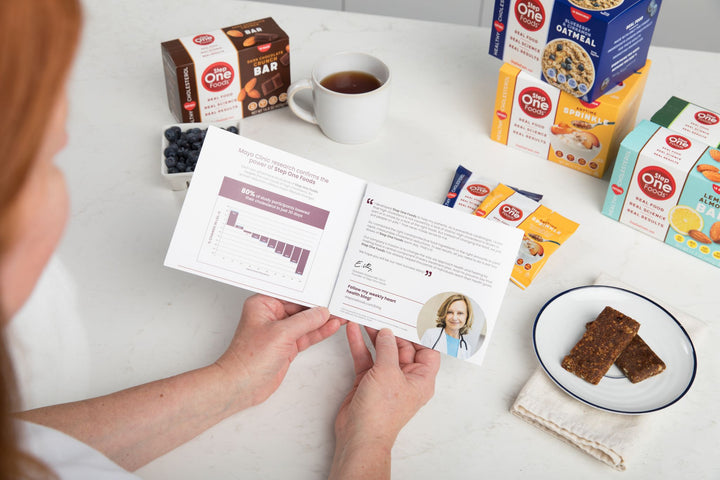
Learn How Step One Foods Can Help You Lower Your Cholesterol Levels
If you want an easy way to improve your diet so as to support your cholesterol and blood pressure lowering efforts, Step One Foods is your solution. Step One Foods are clinically formulated to help lower cholesterol by incorporating essential cholesterol modulating nutrients like plant sterols, fiber, antioxidants and Omega-3s into each serving. There are also various items to choose from, including bars, smoothies, pancake mixes and oatmeal and nearly all are sodium free.
Adding Step One Foods into your diet is simple. Just exchange something similar you’re already eating in your diet with two Step One Foods items per day. It’s that easy! Shop our online store and order your Step One Foods solution today!
